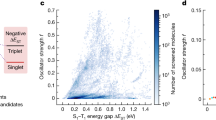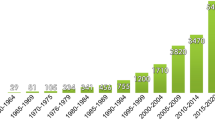Abstract
THE band spectrum of sodium in the visible region consists of two systems, one in the red on the longer wave-length side of the yellow D lines, and another stronger one in the green on the shorter wave-length side of these lines (R. W. Wood, Phil. Mag., 18, p. 530; 1909). Potassium possesses two similar band systems (J. C. McLennan and Ainslie, Proc. Roy. Soc., 103, p. 304; 1923). It is now known that the bands on the red side belong to a triplet system, 3P → 1S, and those on the blue side to a singlet system, 1P → 1S. This results from alkali molecules having in their normal state two outer electrons like the atoms of the alkaline earths.
This is a preview of subscription content, access via your institution
Access options
Subscribe to this journal
Receive 51 print issues and online access
$199.00 per year
only $3.90 per issue
Buy this article
- Purchase on Springer Link
- Instant access to full article PDF
Prices may be subject to local taxes which are calculated during checkout
Similar content being viewed by others
Author information
Authors and Affiliations
Rights and permissions
About this article
Cite this article
MCLENNAN, J., RUEDY, R. The Atomic Spectral Lines Associated with the Band Fluorescence of Alkali Metals. Nature 121, 500–501 (1928). https://doi.org/10.1038/121500b0
Issue Date:
DOI: https://doi.org/10.1038/121500b0
Comments
By submitting a comment you agree to abide by our Terms and Community Guidelines. If you find something abusive or that does not comply with our terms or guidelines please flag it as inappropriate.



